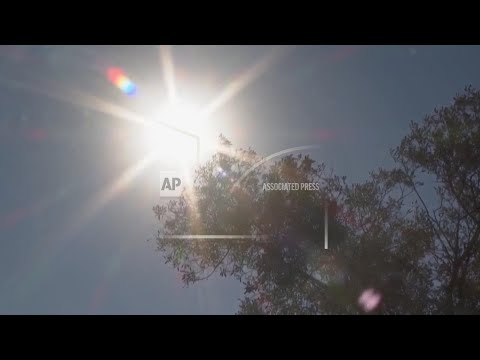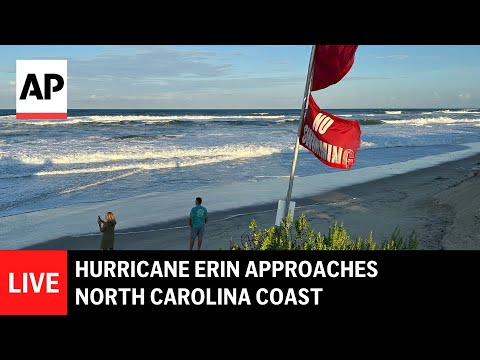(29 Apr 2025)
WORLD CLIMATE GEOENGINEERING
SOURCE: ASSOCIATED PRESS / NASA
RESTRICTION SUMMARY:
NASA – Must credit
LENGTH: 7:57
NASA – Must credit
++ANIMATION++
++MUTE++
1. Animation of Arctic sea ice ++MUTE++
2. Animation of global temperatures ++MUTE++
ASSOCIATED PRESS
ARCHIVE: Athens, Greece – 17 July 2024
3. Sun and tree
ASSOCIATED PRESS
ARCHIVE: Kulusuk, Kangerlussuaq Glacier, eastern Greenland – 14 August 2019
4. Various aerials of melted ice in Greenland during NASA expedition
ASSOCIATED PRESS
ARCHIVE: Houston, Texas, US – 29 August 2017
5. Various of flooding in downtown Houston due to Hurricane Harvey
ASSOCIATED PRESS
ARCHIVE: Harris County, Texas, US – 27 August 2017
6. Rescue truck driving down street
7. Rescue crew members
8. Man being helped onto truck
9. Water displaced by truck
10. Mostly submerged car
11. Side view from truck
12. Family on truck
ASSOCIATED PRESS
ARCHIVE: Farnborough, UK – 18 July 2022
13. Various of Boeing 777 in flight
ASSOCIATED PRESS
London, UK – 28 April 2025
++VIDEO CALL++
14. SOUNDBITE (English) Alistair Duffey, PhD researcher at University College London (UCL):
"So our study examined a climate intervention technique called stratospheric aerosol injection, which is an idea to cool down the planet by adding a layer of small reflective particles, aerosols, into the high atmosphere. Those particles would reflect a small amount, perhaps 1% of the incoming sunlight. And there is good evidence that this could be used to cool the planet, and perhaps to reduce some climate impacts on vulnerable people around the world."
ASSOCIATED PRESS
ARCHIVE: Minneapolis, US – 23 May 2024
15. Various Delta airplanes taking off and taxiing
ASSOCIATED PRESS
London, UK – 28 April 2025
++VIDEO CALL++
16. SOUNDBITE (English) Alistair Duffey, PhD researcher at University College London (UCL):
"What we were interested in is understanding the trade-off between the difficulty, the logistical challenge of doing this and the climate impacts on the ground. So in particular, we wanted to understand how, if you could get to different altitudes in the sky, how the level of impact on the ground would vary depending on how high we could go. In general, it’s harder to do this at high altitudes. So our central finding was that if we were limited to using existing large aircraft and therefore limited to altitudes of up to around 13 kilometres, we found that there was still meaningful climate impacts. We could still cool the planet meaningfully with plausible injection magnitudes of aerosols."
ASSOCIATED PRESS
ARCHIVE: Singapore – 15 February 2022
17. Various Boeing 777X flyby air display
ASSOCIATED PRESS
London, UK – 28 April 2025
++VIDEO CALL++
18. SOUNDBITE (English) Alistair Duffey, PhD researcher at University College London (UCL):
"We are imagining releasing sulphur dioxide, which is a gas, which would react with water vapour and oxidise into sulphuric acid, which then dissociates and part of that sulphuric acid is the sulphate aerosol, which this kind of small liquid droplet. They tend to produce a size distribution in the stratosphere, which makes them good reflectors of sunlight. Those sulphate aerosols then slowly sediment downwards through the stratosphere and ultimately once they re-enter the troposphere, the part of the atmosphere we live in, most of them rain out so they come out in water and as acid rain essentially."
ASSOCIATED PRESS
ARCHIVE: Minneapolis, US – 6 September 2023
19. Delta jet takes off from runway
ASSOCIATED PRESS
London, UK – 28 April 2025
++VIDEO CALL++
Find out more about AP Archive: http://www.aparchive.com/HowWeWork
Twitter: https://twitter.com/AP_Archive
Facebook: https://www.facebook.com/APArchives
Instagram: https://www.instagram.com/APNews/
You can license this story through AP Archive: http://www.aparchive.com/metadata/youtube/2edbbe0a48bc4d4888526d94414c5b9f
Author: AP Archive
Go to Source
News post in May 4, 2025, 3:04 pm.
Visit Our Sponsor’s:
News Post In – News





